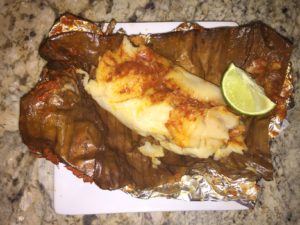 Tamales are typically enjoyed in Guatemala during Christmas and New Year’s but they are usually made for the weekends, specifically, Saturday’s. There are three different variations of the Guatemalan tamale that include: Colorado (red), negro (black), and chuchito (loosely translates into little dog). There is also a smaller tamale that is called a pache. The only difference is the pache is made from potatoes rather than corn masa and they are only sold on Thursday’s, starting to see a trend here? Guatemalan’s definitely like to know what they’re eating on certain days of the week. Kind of like Taco Tuesday here in the United States. Tamales in the United States are available through Guatemalan panaderias or bakeries. They are few and far between so I like to cling to the one we have frequented for the last 10 years Panaderia Guatemala located in Harbor City near the corner of Lomita Boulevard and Normandie. Tamales are usually served with a side of Guatemalan bread called a Pirujo, which is a lot like Hawaiian bread but a bit less sweet. It is also necessary to have a fresh slice of lime to squirt on top of the tamale to impart freshness.
Tamales are typically enjoyed in Guatemala during Christmas and New Year’s but they are usually made for the weekends, specifically, Saturday’s. There are three different variations of the Guatemalan tamale that include: Colorado (red), negro (black), and chuchito (loosely translates into little dog). There is also a smaller tamale that is called a pache. The only difference is the pache is made from potatoes rather than corn masa and they are only sold on Thursday’s, starting to see a trend here? Guatemalan’s definitely like to know what they’re eating on certain days of the week. Kind of like Taco Tuesday here in the United States. Tamales in the United States are available through Guatemalan panaderias or bakeries. They are few and far between so I like to cling to the one we have frequented for the last 10 years Panaderia Guatemala located in Harbor City near the corner of Lomita Boulevard and Normandie. Tamales are usually served with a side of Guatemalan bread called a Pirujo, which is a lot like Hawaiian bread but a bit less sweet. It is also necessary to have a fresh slice of lime to squirt on top of the tamale to impart freshness.
The only person in my family that I have actually seen make tamales from scratch was my great aunt my mom’s side, may God rest her soul. I hold her dear in my heart because she was also our nanny until I was about 13, when she passed away from cancer. She did all the cooking and cleaning for the family, and she was kind of like my mother since my actual mom was off working, and I never saw her very much.
I often think that our Guatemalan ancestors were either really devoted to food or perhaps just had a lot of time on their hands. Nowadays, when we need tamales we just order them from the bakery and they magically appear warm and ready to go the day of. Although there are simpler recipes online, I wanted to share one that was as authentic as possible. The recipe that follows is one that I gathered from my grandmother telling me how to make them, since my family has no actual written recipe and one that I found online at, The Weiser Kitchen, that is the closest in flavor, process, and style.
Ingredients:
For the Sauce:
8 tomatoes whole
2 large yellow onions, peeled, cut in quarters
1 pound medium tomatillos
4 garlic cloves, peeled
1 tablespoon canola oil
3 fresh bay leaves
3 teaspoons fresh thyme
1 ounce dark chocolate
2 dried pasilla chiles
1 dried guacque (huaques) chile or dried guajillo chile
2 cups reserved chicken stock
Crack or cut open the dried peppers, then shake out the seeds and snap off the stems. Tear or cut into coarse pieces and place in a large bowl. Warm 2 cups of the reserved chicken cooking liquid and place in the bowl with the peppers. Let stand, uncovered, for 5 to 8 minutes.
In a strong large blender or in a food processor, blend or process the tomatoes, onions, tomatillos and garlic until smooth, in batches if necessary. Transfer to a bowl.
Add the softened peppers and pepper soaking water to the processor and process until completely smooth. If the mixture is not completely pureed, you must strain it, no lumps allowed here!
Heat the oil in a large pot over high heat until shimmering. Add the pureed tomato and tomatillos, pureed peppers, bay leaves, and thyme. Cover and bring to a boil, then reduce heat to simmer and add the chocolate. Cover and cook over low heat for 1 hour, stirring occasionally.
For the Spice Mix:
1 (2-inch) cinnamon sticks
3 tablespoons sesame seeds
2 tablespoons pumpkin seeds
1 teaspoon whole cumin seeds
½ teaspoon whole cloves
1 tablespoon rice flour
These must be toasted. Yes, all of them! In a food processor, finely grind the cinnamon, sesame seeds, pumpkin seeds, cumin, and cloves. Stir into the sauce. Whisk in the rice flour, and simmer over the lowest heat possible, 45 minutes. (Sauce can simmer for up to 3 hours, as long as it is covered and stirred occasionally to prevent burning).
For the Chicken Filling:
2 pounds chicken breasts
4 cups water
4 garlic cloves, peeled
3 celery stalks, leaves attached, roughly chopped
1 large onion, skin, stem, and root end removed
4 bay leaves, fresh preferred
1 teaspoon salt
½ teaspoon whole black peppercorns
In a large pot add all of the chicken filling ingredients. Cover and bring to a boil over high heat. Reduce the heat to a simmer and cook until the meat is fork tender, 45 minutes to 1 hour.
Remove the chicken from the cooking liquid and transfer to a bowl. Skim, strain and reserve the liquid. Pour broth over the meat until just covered. Reserve the remaining broth. Cool the meat in the broth. As soon as you can handle the chicken, remove the meat from the bone, tear into strips and return to the broth. The chicken can be prepared up to 2 days in advance. Cover and refrigerate the chicken in the broth.
For the Masa:
12½ cups of water, chicken stock or strained cooking liquid from the pork and/or chicken
2 pounds masa harina (instant masa)
8 ounces unsalted butter
½ cup canola oil
2 tablespoons kosher salt to taste
1 whole large yellow onion, peeled, stem, and root end removed
2 tablespoons kosher salt, or more to taste
Combine the water and masa in a large pot over medium heat. Cook, stirring, until warm, then add the butter (in chunks), whole onion, oil and salt. Continue to cook, stirring (like your life depended on it) with a strong spatula, until the masa thickens and becomes very pale in color (like cream of wheat), and a pasty residue appears around the pot, at least ½ hour. Remove from heat and transfer to a lightly oiled bowl. Cover with foil.
The leaves for Wrapping the Tamales:
40 large banana leaves, frozen and fully defrosted, or fresh
Parchment paper cut to size, each approximately 9 by 13-inches
4 red bell peppers, julienned or cubed
Green Olives (optional)
Kitchen twine
Fit a large pot with a steamer rack or a pasta insert and fill the bottom with any remaining stock and water to about ¼ to ½ inch below the steamer rack or the bottom of the pasta insert. Lay 1 to 2 banana leaves on the steamer to cover. Cover the pot, bring to a boil and reduce to a simmer while you make the tamales.
Place a piece of parchment paper on a work surface. Fold one long side of the paper over, about ½ inch, creating a small ledge (see the picture). Lay a banana leaf on the paper. Place ¼ cup masa on the leaf and flatten it out. Place 1 tablespoon sauce, then 1 tablespoon or about 1 ounce chicken over the masa. Add a few peppers or olives if you like them.
Fold the 2 short sides in towards the center until almost touching. Take the long side of the paper without the small fold and fold it over towards the center, Take the last side with the fold and fold it into the center to form a packet. Flip over and tie with kitchen twine both lengthwise and widthwise. (Or use a spare banana leaf, torn into strips). Place the packet, standing up in the steaming pot and cover. Make sure the water remains at a bare simmer, replenishing as necessary, without splashing the tamales. Repeat with remaining tamales.
Cover the packets with all remaining banana leaves. Cover the pot and steam for at least 45 minutes or up to 2 hours. Depending on the size of the pot here, remember that it could take up to 6 hours if you are using a traditional Guatemalan pot that can hold many tamales at the same time.
References
“Authentic Guatemalan Tamales – Bohemian Bowmans.” Bohemian Bowmans. N.p., 2016. Web. 16 Nov. 2016.
G., Victor, Jasmine G., Sandra B., Yessy M., and Jason M. “Guatemala Bakery – Harbor City – Harbor City, CA.” Yelp. N.p., 2012. Web. 16 Nov. 2016.
“Guatemalan Baked Goods … Cubilletes, Pirujos, Etc? – Chowhound.” N.p., n.d. Web. 16 Nov. 2016.
“Guatemalan Tamales for Christmas: Colorado, Negro & Chuchito.” AntiguaDailyPhoto.Com. N.p., 2016. Web. 16 Nov. 2016.
Weiser, Tammy Ganeles. “Guatemalan Tamales with Chicken | The Weiser Kitchen.” The Weiser Kitchen. N.p., n.d. Web. 16 Nov. 2016.


 One of Mexico’s favorite desserts must be Bionicos. This dessert is not only healthy, it is also very delicious. It is a somewhat healthy dessert, it provides a portion of your recommended fruit. One of the reasons Bionicos are so popular is because they are easy to make, and they are not time consuming. Today’s dual economic households makes it very difficult for moms to slave themselves in the kitchen preparing desserts. The main reason I presented Bionicos in class was because it brings back memories from when I first came to the United States. Another reason I chose this dessert was because I enjoyed learning its history, knowing how it is more popular in the states. This desert was created as a healthy alternative to saturated fats, fried foods, and carbs.
One of Mexico’s favorite desserts must be Bionicos. This dessert is not only healthy, it is also very delicious. It is a somewhat healthy dessert, it provides a portion of your recommended fruit. One of the reasons Bionicos are so popular is because they are easy to make, and they are not time consuming. Today’s dual economic households makes it very difficult for moms to slave themselves in the kitchen preparing desserts. The main reason I presented Bionicos in class was because it brings back memories from when I first came to the United States. Another reason I chose this dessert was because I enjoyed learning its history, knowing how it is more popular in the states. This desert was created as a healthy alternative to saturated fats, fried foods, and carbs.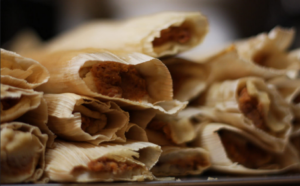

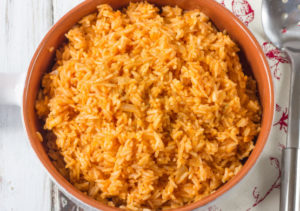
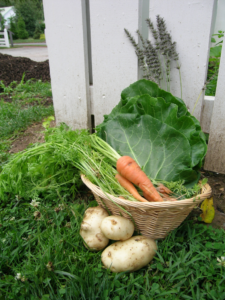
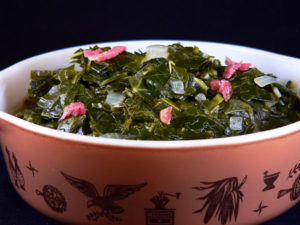

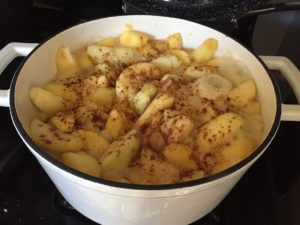
 Tamales are typically enjoyed in Guatemala during Christmas and New Year’s but they are usually made for the weekends, specifically, Saturday’s. There are three different
Tamales are typically enjoyed in Guatemala during Christmas and New Year’s but they are usually made for the weekends, specifically, Saturday’s. There are three different 